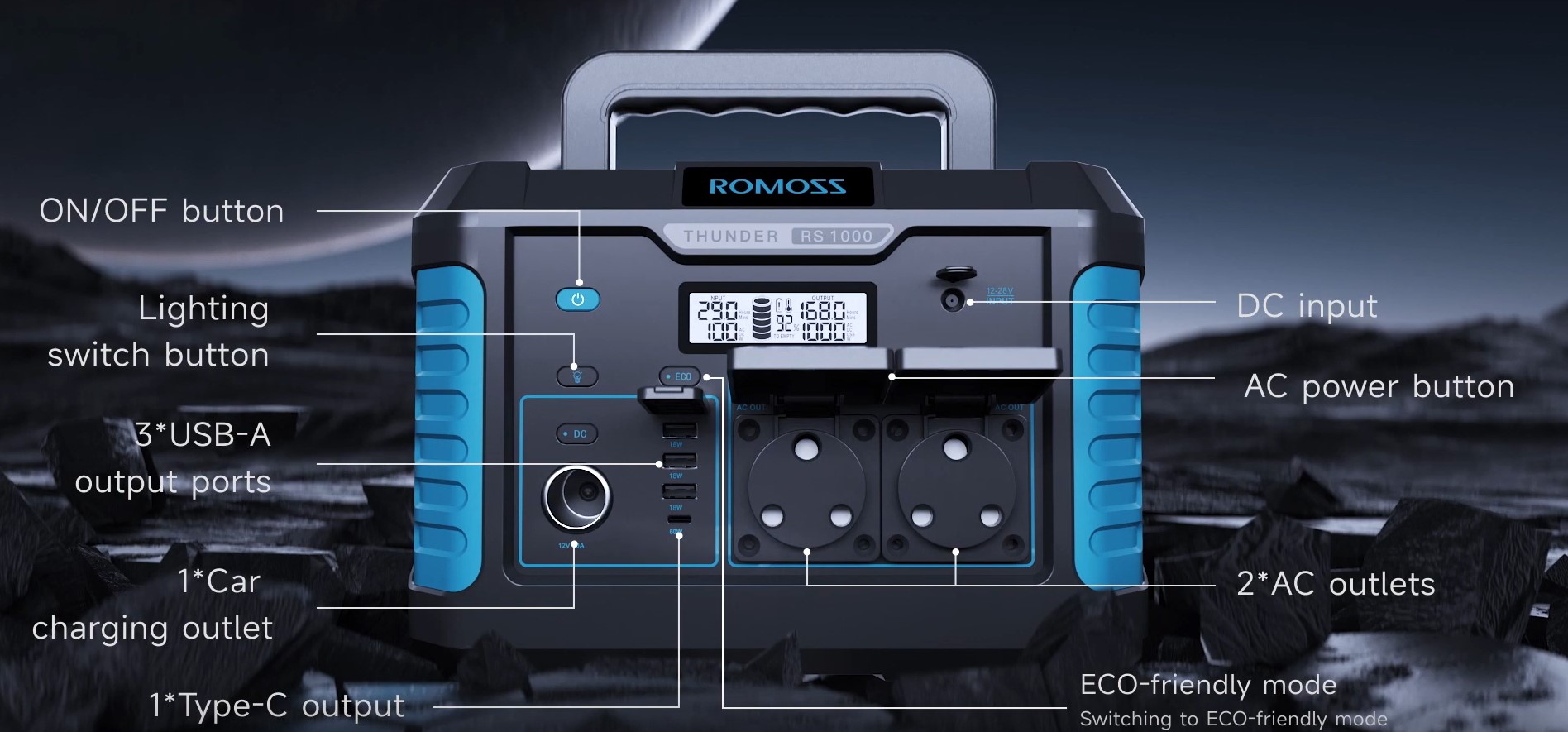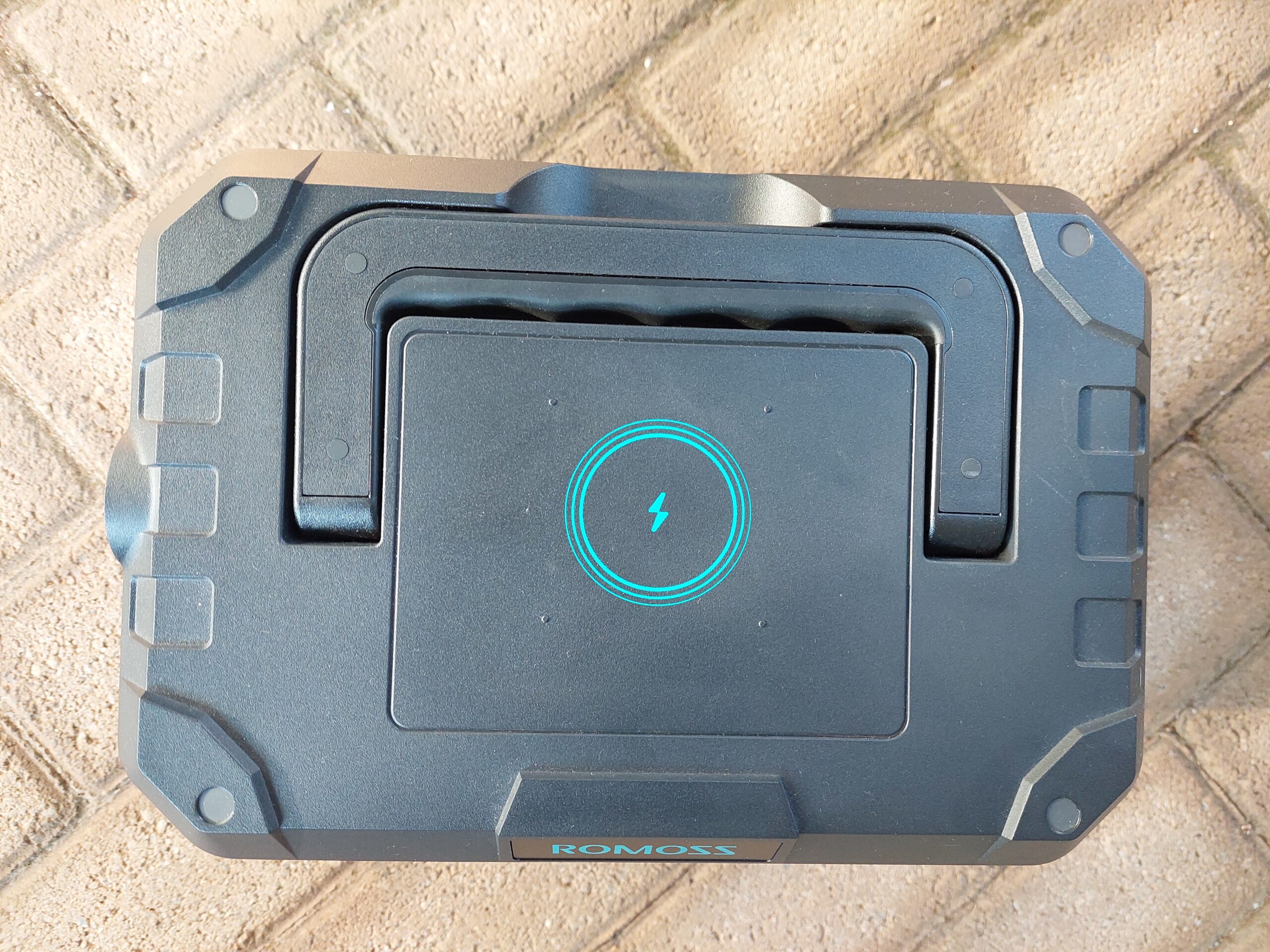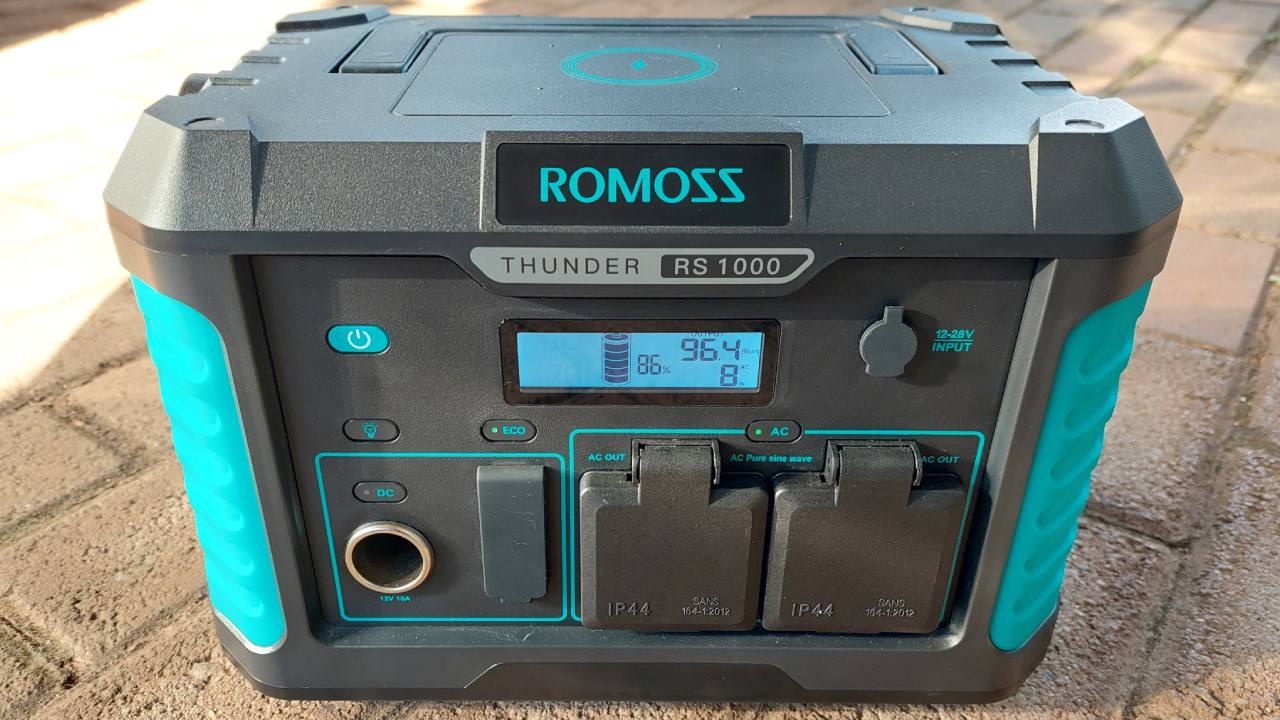Not being able to use the electricity you pay for sucks big time. What’s worse is having to live your life according to the whims of others. For South Africans under loadshedding, both of these problems are a daily occurrence.
Having to adjust your dinner time because there’s a blackout at 20:00, or having to go to bed early because there’s no power from 22:00. Having to wake up and not be able to boil a kettle or take a hot shower. What do you mean there’s no coffee?
Luckily, advancements in technology and a consumer base ravenous for alternative power sources have brought several brands that offer products manufactured to make the long hours of loadshedding easier, faster, and quieter to South Africa.
Brands like EcoFlow have seen glowing praise from us. The top-of-the-range EcoFlow Delta 2 portable power station in particular is among the best products in this line ever brought to market.
Its direct competitor Romoss also has portable power stations, similar to EcoFlow, that can be carried by a small handle and moved around the house as you see fit. We had the chance to review the Romoss Thunder RS 1000 Power Station and found that while it wasn’t as fancy as the Delta 2, it is more affordable and makes handling loadshedding just as bright.
A power station that keeps it simple
Romoss, from the far away Philippines has heard the clarion call of South Africans sitting in the dark. Beyond portable power stations, the brand also offers power banks locally, like the Romoss Zeus which gives 40 000mAh of battery capacity.
However, those can only get you so far and if you want to power larger tech like TVs or desktops then a power station is what you need to look at. These provide serious competition to the likes of diesel generators, since they’re less noisy, less expensive overall and can still help out significantly during blackouts.

For Romoss, it offers three different power stations for the Thunder line. Namely in the 300W, 500W and 1000W configurations. We tested out the girthy 1 000W option, which in reality is only 933W, but this isn’t a big deal.
Immediately we were struck by the look of the Thunder. It’s like a power cell you would place into a spaceship’s drive core especially with the blue rubber flourishes on its corners. It is a simple machine, with a handle, a light on the short side and one face full of plug points and options on its broadside.

It doesn’t come with instructions, and there is no accompanying app to keep track of usage. All the information is given simply through a small screen and there’s nothing to the setup, expect to plug it into the wall socket using a 12-28V cable that looks like something often accompanying notebooks.
Then you can use one of the two three-point plug inputs to power your appliances of choice, as well as three different USB Type-A inputs and one USB Type-C point. You can also use an adapter specifically made to recharge the Thunder using your car, but this will take more time to do than just by plugging it into the wall.
The Thunder also has a wireless charging area right at the top, but we didn’t have a smartphone with wireless charging enabled on hand and couldn’t test this feature out.

Loadshedding? What loadshedding?
Powering the Romoss Thunder is the 933W Ternary Lithium Battery, capable of 800 battery cycles, comparable to the base EcoFlow Delta, but not the Delta 2 which is capable of 3 000 cycles. This essentially details how long the Thunder will last.
Estimates vary, but 800 cycles will probably be around four to five years of sustained use before the battery begins to degrade. Though this does depends on how often you use it. This may be lengthened even more if you use the Thunder in its eco-friendly setting, which we did all the time, without even noticing it.
With its 933W capabilities, the Thunder can power small appliances like an internet modem, toasters, blenders, fans, sewing machines and even smaller fridges with ease. It excels in short loadshedding-sized bursts. A 50-inch smart TV will run on the Thunder for several hours. The power station itself estimates around six to seven hours worth of output, so even the four-hour loadshedding blocks will give no issues here.
Adding a PlayStation 4 console to this barely affects the Thunder and it silently supplies stable energy so well that you may forget that it is even there. We had our desktop PC and two smart screens at once, with the Thunder estimating around five hours of power supply.
With it only requiring a few hours of charging after this to get to full again, you could essentially keep the Thunder plugged into the power, and your PC plugged into the Thunder and just forget that loadshedding is a thing.
The handy 1W LED on its side grants a large area of light, especially if you forgot to charge your Magneto lights. Depending on the size of your home, you could easily light up the whole kitchen with the Thunder. It also has a built-in LED on the top handle to make it easier to find in the dark.

You can keep gaming even as the lights around you turn dark as the loadshedding switch itself is seamless. We tested this out once without our consent, as we tried to switch off our PC before the loadshedding block, only to be confronted with a common Windows “Updating. Don’t switch off your PC.”
The stress of this was quickly erased when the power went out and the PC just kept updating as if nothing had happened. That is the power of the Thunder, and its biggest advantage. Peace of mind. One particular night we were confronted with a four-hour loadshedding block from 22:00 to 02:00 – that’s right, prime gaming time – and fell into a malaise.
Only to realise we had the Thunder at hand and immediately felt better. This, for us, is worth the asking price.
Hiccups
We only have small gripes when it comes to the Thunder. The first is that the built-in handle LED eventually becomes quite hot if you forget to switch it off. This happened to us because it is unnoticeable if the handle is tucked away.
This won’t effect the capabilities of the portable station, but when we noticed it we became a bit concerned as to why the top of the machine was at such a high temperature.
The second is that for some reason you will sometimes have to re-switch on the Thunder at its power button, and at its AC button in order to begin drawing electricity, after you already switched it on a few hours ago. This is the tiniest of tiny inconveniences, but it is noticeable as it is absent from competitors like EcoFlow, which remain on or off depending on the last action you performed.
Romoss Thunder RS 1000 power station – Final Verdict
Available for R13 999 from the likes of Takealot, the Romoss Thunder RS1000 will make dealing with loadshedding much easier. You will regain access to your TV, your phone chargers, your PC, your gaming consoles, your internet, and even a few kitchen appliances to boot.
It is more affordable than the EcoFlow Delta 2 power station by several thousands of Rand, but doesn’t come with a smartphone app and won’t be able to power your fridge or your air fryer. But that doesn’t matter.
There’s nothing too complicated here. Just plug it in and take some of your power back from Eskom. You deserve it.
FINAL SCORE: 9 OUT OF 10.

